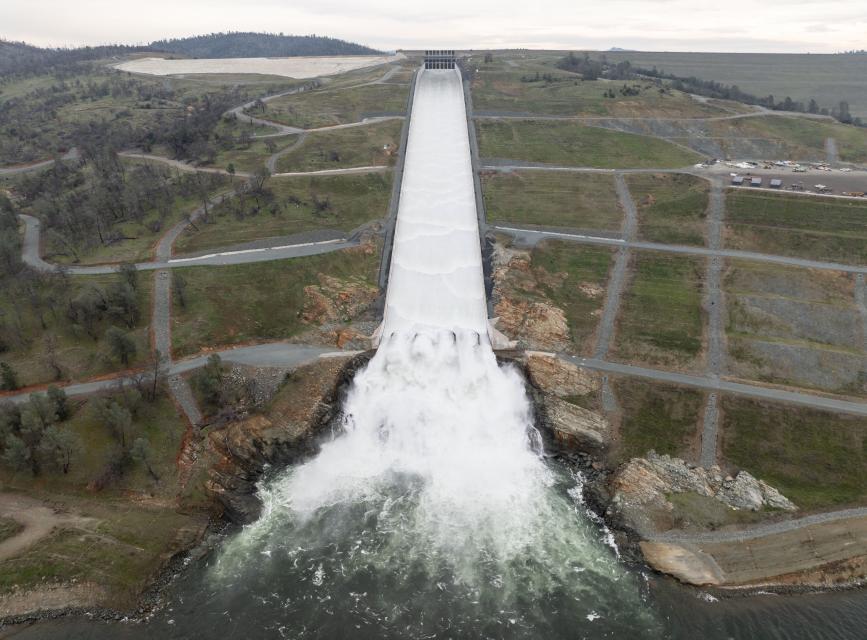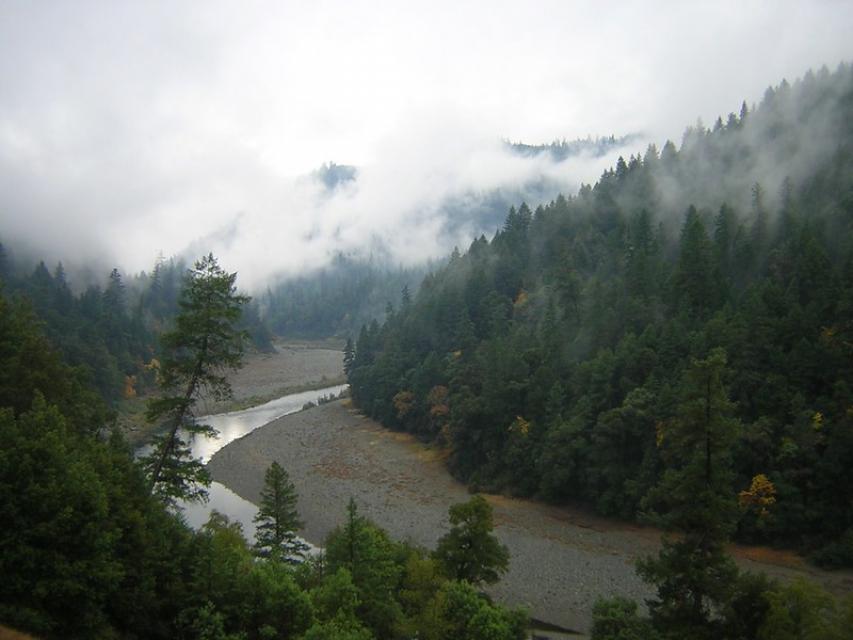California’s Quest to Turn a Winter Menace Into a Water Supply Bonus is Gaining Favor Across the West
Read our Western Water Article, Water Word of the Day and Five Don't-Miss Water Reads from Across the West
Dear Western Water readers:
 For the past 12 years, water
managers in California have been learning how to manage dams more
nimbly in the face of wildly variable weather, and particularly
to meet the challenge of atmospheric rivers — intense winter
storms that pummel California and other parts of the West with
huge amounts of rain.
For the past 12 years, water
managers in California have been learning how to manage dams more
nimbly in the face of wildly variable weather, and particularly
to meet the challenge of atmospheric rivers — intense winter
storms that pummel California and other parts of the West with
huge amounts of rain.
That effort has led to a new water-management approach, called Forecast-Informed Reservoir Operations, or FIRO. By pairing FIRO with accurate forecasts of where those storms will hit and how much rain they’ll bring, dam operators can work in real time to not only reduce the risk of floods but also capitalize on atmospheric rivers’ potential as a source of additional water for protection from drought.
Since 2019, the concept has been tested on three dams in California, with programs in development for several other dams across the West. Now, it’s poised to improve operations at 39 more dams across the arid Southwest and another 71 throughout the rest of the country. That will vastly increase FIRO’s potential and help dam operators stand ready for the wilder weather that the future will likely bring: storms intensified — and made more erratic — by climate change.
Read more about the concept and what’s ahead in dam management in Western Water.
Water Around the West
Five don’t-miss articles from California and across the West:
Shorebirds and wetlands may be winners at the Salton Sea, new Audubon CA report finds: An Audubon California report based on seven years of bird surveys and habitat assessments at the Salton Sea finds that several factors have resulted in an increase in wetland habitat, and an increasing number of shorebirds are taking advantage.
California’s Yurok Tribe gets back ancestral lands that were taken over 120 years ago: The Associated Press details what is being characterized as the largest land-back conservation deal in California history along the lower Klamath River, finalizing the return of the Yurok Tribe’s ancestral lands.
The arid air of Death Valley may actually be a valuable water source: NewScientist’s Alex Wilkins writes about Xuanhe Zhao at the Massachusetts Institute of Technology and his colleagues developing a power-free water-collecting device that extracted a glassful of clean water from the air over Death Valley in California, suggesting that the device could generate the precious resource in such arid regions.
New Nevada law to offer payment for water rights: Fox 5 News Las Vegas’ Kim Passoth reports on a new Nevada program to pay people in the driest state in the nation to voluntarily give up their water rights.
A battle is brewing in the American West: A thirst for cheap power on one side and a prehistoric fish on the other: Last year, the Biden administration moved to protect a threatened Grand Canyon fish called the humpback chub by releasing surges of water from Glen Canyon Dam upstream. The effort is intended to disrupt the reproduction of invasive predatory smallmouth bass, but it also limits the amount of power that can be generated by the dam. Now, The Salt Lake Tribune’s Anastasia Hufham writes, Utah Republicans hope to roll back the decision.
Western Water Word of the Day
 A new approach called
Forecast-Informed Reservoir Operations is helping the U.S. Army
Corps of Engineers and other agencies strike a better balance
between drought protection and flood management. Floods are a
particularly challenging phenomenon to control, and have had
destructive consequences in many different parts of California,
including the town of Guerneville in Sonoma County, where a 1995
flood caused $50 million in damage, and Sacramento, which is
considered the second-most flood-prone major city in the United
States after New Orleans. Learn more about flooding and
flood management in Aquapedia, our online water
encyclopedia.
A new approach called
Forecast-Informed Reservoir Operations is helping the U.S. Army
Corps of Engineers and other agencies strike a better balance
between drought protection and flood management. Floods are a
particularly challenging phenomenon to control, and have had
destructive consequences in many different parts of California,
including the town of Guerneville in Sonoma County, where a 1995
flood caused $50 million in damage, and Sacramento, which is
considered the second-most flood-prone major city in the United
States after New Orleans. Learn more about flooding and
flood management in Aquapedia, our online water
encyclopedia.
At the Foundation
 Join us on our
Klamath River Tour, Sept. 8-12, as we examine water
issues on this special journey along the 263-mile river, from its
spring-fed headwaters in south-central Oregon to its
redwood-lined estuary on the Pacific Ocean in California. Among
the planned stops is the former site of Iron Gate Dam & Reservoir
for a firsthand look at restoration efforts following the
obsolete structure’s removal. In anticipation of high demand, the
Foundation will allocate tickets via a lottery
method. To enter before limited bus seating is
gone, review
the tour details here and submit the entry form
linked at the top of the tour page.
Join us on our
Klamath River Tour, Sept. 8-12, as we examine water
issues on this special journey along the 263-mile river, from its
spring-fed headwaters in south-central Oregon to its
redwood-lined estuary on the Pacific Ocean in California. Among
the planned stops is the former site of Iron Gate Dam & Reservoir
for a firsthand look at restoration efforts following the
obsolete structure’s removal. In anticipation of high demand, the
Foundation will allocate tickets via a lottery
method. To enter before limited bus seating is
gone, review
the tour details here and submit the entry form
linked at the top of the tour page.
Western Water Resource
 Our California Water
Map shows the Golden State’s rivers and
lakes. The map highlights the integral role water plays in
the state. Check out California’s natural waterways and man-made
reservoirs and aqueducts – including federally, state
and locally funded projects – the wild and scenic
rivers system and natural lakes. The map features
photos of California’s natural environment, rivers, water
projects, wildlife, and urban and agricultural water
uses. Order your copy
here.
Our California Water
Map shows the Golden State’s rivers and
lakes. The map highlights the integral role water plays in
the state. Check out California’s natural waterways and man-made
reservoirs and aqueducts – including federally, state
and locally funded projects – the wild and scenic
rivers system and natural lakes. The map features
photos of California’s natural environment, rivers, water
projects, wildlife, and urban and agricultural water
uses. Order your copy
here.








